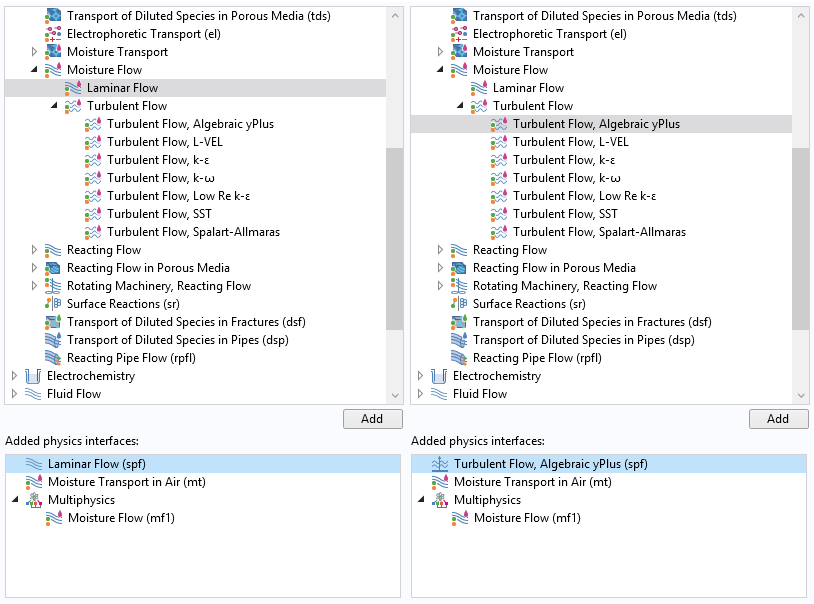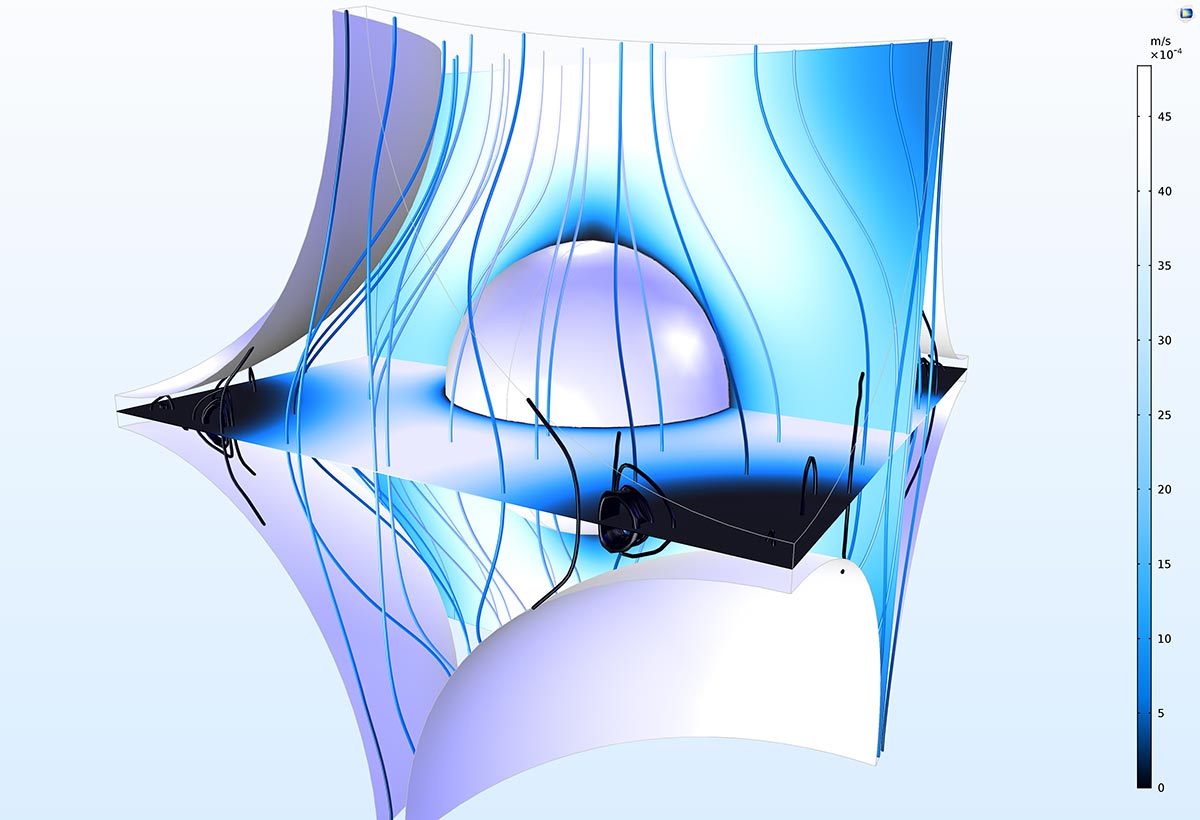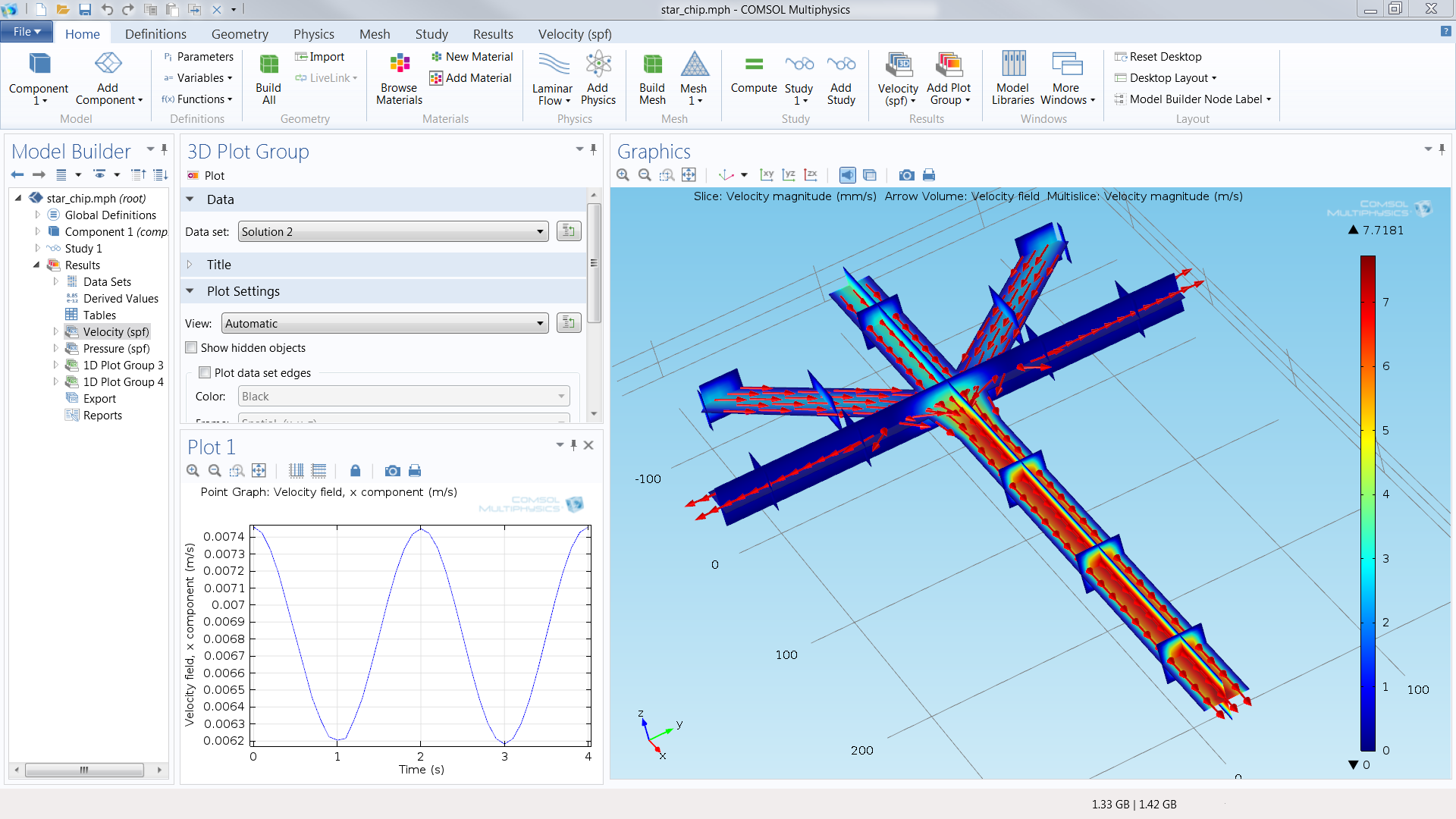
In this video, we showcase thePorous Reactor with Injection Needlemodel to help explain how you can use COMSOL Multiphysics to model chemical species reaction and transport in porous media. These findings show good agreement with experimental observations.Help! Hydrodynamic part is modeled using Darcy’s law (dl) for fluid flow in Darcian porous media, while Brinkman equation (br) is used for the non-Darcian porous media. From the plots, we can see that the particles converge at heights that are 0.2 and 0.8 times the width of the channel. Their initial force is weaker as they are released in the area where the velocity gradient is smallest. It does, however, take longer for particles released near the center of the channel to reach these positions. The results indicate that all of the particles are close to equilibrium positions at distances of about 0.3 D on either side of the center of the channel. Note that in the plot below, the color expression represents the y-component of the particle velocity in mm/s. We can then shift our attention to the trajectories of the neutrally buoyant particles. The parabolic fluid velocity profile within a channel that is bound by two parallel walls. The plot uses an automatic view scale to make the results easier to visualize. Note that the aspect ratio of the geometry is 1000:1, so the channel is very long compared to its height. As expected, the velocity profile is parabolic. First, we can look at the fluid velocity magnitude in the channel. However, we opt to use the Laminar Flow physics interface in this case, as it demonstrates the workflow that is most appropriate for a general geometry. This means that we could have directly entered the analytic expressions for fluid velocity. For the laminar flow of a Newtonian fluid inside two parallel walls, it is known that the profile will be parabolic. Thanks to the Laminar Inflow boundary condition, we can automatically compute the complete velocity profile at the inlet boundary.

This is then coupled to the Particle Tracing for Fluid Flow interface via the Drag Force node. To compute the velocity field, we use the Laminar Flow physics interface. It is also assumed that the spherical particles are small in comparison to the width of the channel and that they are rotationally rigid. We assume that the lift force acts only perpendicular to the direction of the fluid velocity. By definition, the gravitational and buoyant forces cancel out one another. Note: Lift and drag forces make up the total force acting on neutrally buoyant particles inside a creeping flow. Built-in corrections for both the lift and drag forces allow us to account for the presence of these walls in the simulation analysis. To account for relevant forces, we use derived expressions from a similar migration of particles in a 2D parabolic flow inside of two parallel walls (see Ref. Accurately Model the Migration of Particles in Inertial Focusingįor this example, we consider the particle trajectories in a 2D Poiseuille flow.
Laminar flow module comsol 5.3 software#
A new benchmark example from the latest version of COMSOL Multiphysics - version 5.3 - highlights why the COMSOL® software is the right tool for obtaining reliable results. In order for inertial focusing to be effective in these and other applications, accurately analyzing the migration patterns of the particles is a key step. Image in the public domain, via Wikimedia Commons. Many types of medical diagnostics use inertial focusing for testing and analysis. This technique is widely used in clinical and point-of-care diagnostics as a way to concentrate and isolate particles of different sizes for further analysis and testing.

Today, we use the term inertial focusing to describe the migration of particles to a position of equilibrium.

The reason for this behavior, as they would discover decades later, could be traced back to the forces that act on particles in an inertial flow. This correlates to a distance from the parallel walls of around 0.2 times the width of the flow channel. Silberberg observed a surprising effect: When carried through a laminar pipe flow, neutrally buoyant particles congregate in a ring-like structure with a radius of about 0.6 times the pipe radius.

Our new benchmark model highlights these capabilities. Version 5.3 of the COMSOL Multiphysics® software gives you the tools to generate reliable results that agree with experimental data on inertial focusing. Ensuring its effectiveness requires accurately describing the migration of particles as they flow through a channel. Inertial focusing is a useful technique for various applications, particularly within the medical field.


 0 kommentar(er)
0 kommentar(er)
